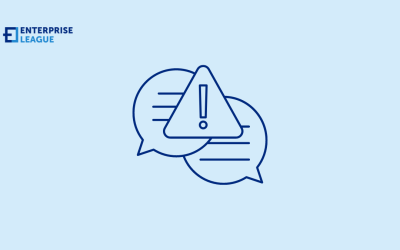In the world of healthcare, safeguarding patient information is of paramount importance. The Health Insurance Portability and Accountability Act (HIPAA) sets forth strict standards for protecting the privacy and security of patients’ protected health information (PHI). Achieving HIPAA certification is not only a legal requirement but also a critical step in ensuring the confidentiality and integrity of healthcare data. In this comprehensive guide, we will delve into the best practices for achieving Best practices for HIPAA certification in the healthcare industry, helping organizations navigate the complex landscape of compliance.
The significance of HIPAA certification
What is HIPAA certification?
It’s important to clarify that there is no official “HIPAA certification” granted by a regulatory body. Instead, HIPAA compliance involves adhering to a set of standards and regulations outlined in the HIPAA Privacy Rule, Security Rule, and other related documents. Achieving HIPAA compliance involves implementing the necessary policies, procedures, and safeguards to protect PHI.
Why pursue HIPAA compliance?
HIPAA compliance is essential for several reasons:
- Patient trust: Compliance demonstrates an organization’s commitment to protecting patient privacy, fostering trust among patients.
- Legal requirement: HIPAA is a federal law, and healthcare organizations are legally obligated to comply with its provisions. Non-compliance can result in severe penalties and fines.
- Data security: HIPAA compliance helps organizations establish robust data security practices, reducing the risk of data breaches and unauthorized access.
- Reputation management: Maintaining compliance enhances an organization’s reputation and can positively impact patient retention and recruitment.
Best practices for achieving HIPAA certification
Achieving HIPAA compliance involves a multifaceted approach that addresses both the Privacy Rule and the Security Rule. Here are the best practices to guide healthcare organizations through the process:
Conduct a comprehensive risk assessment
- Understand your data: Identify all systems and processes that involve PHI, including electronic health records (EHRs), paper records, and data stored on mobile devices.
- Identify vulnerabilities: Conduct a thorough risk assessment to identify potential security vulnerabilities and privacy risks related to PHI.
- Prioritize risks: Assess the potential impact and likelihood of each risk to prioritize mitigation efforts effectively.
Develop and implement policies and procedures
- Privacy Policies: Develop comprehensive privacy policies that outline how PHI is handled, who has access, and under what circumstances.
- Security Policies: Establish security policies and procedures that cover data access, authentication, encryption, and incident response.
- Training: Train all staff members on HIPAA policies and procedures, ensuring they understand their responsibilities regarding PHI.
Implement administrative safeguards
- Appoint a security officer: Designate an individual responsible for overseeing HIPAA compliance and ensuring policies are enforced.
- Access controls: Implement access controls to restrict access to PHI to authorized personnel only.
- Password policies: Enforce strong password policies, requiring regular password changes and the use of complex passwords.
- Regular auditing: Conduct regular audits and assessments to monitor compliance and identify potential violations.
Establish physical safeguards
- Physical access controls: Ensure that facilities housing PHI have secure access controls, including locks, alarms, and surveillance cameras.
- Device management: Implement policies for the secure handling and disposal of electronic devices that may contain PHI.
- Visitor logs: Maintain visitor logs for areas containing PHI to track access.
Deploy technical safeguards
- Data encryption: Encrypt PHI both at rest and in transit to protect it from unauthorized access.
- Firewalls and intrusion detection: Install firewalls and intrusion detection systems to monitor and protect network traffic.
- Secure email communications: Implement secure email solutions for transmitting PHI electronically. The same goes for texting. Staff should use HIPAA compliant texting to securely and conveniently communicate with patients without compromising their privacy.
- Regular software updates: Keep all systems and software up to date with security patches to address vulnerabilities.
Develop an incident response plan
- Prepare for breaches: Develop an incident response plan that outlines the steps to take in the event of a data breach.
- Notification: Understand the requirements for notifying affected individuals, regulatory authorities, and the media in the event of a breach.
- Training: Ensure that staff members are trained on how to respond to security incidents and breaches effectively.
Monitor and audit compliance
- Regular audits: Conduct regular internal audits and assessments to monitor HIPAA compliance and identify areas for improvement.
- External audits: Consider third-party audits or assessments to provide an objective evaluation of compliance efforts.
- Ongoing training: Provide ongoing training and education to staff members to keep them informed about changes in HIPAA regulations and best practices.
Develop business associate agreements
- Third-party vendors: If your organization shares PHI with third-party vendors or business associates, ensure that appropriate business associate agreements are in place to outline their responsibilities for protecting PHI.
- Due diligence: Conduct due diligence when selecting and evaluating third-party vendors to ensure they meet HIPAA compliance requirements.
Keep up with regulatory changes
- Stay informed: Stay informed about changes in HIPAA regulations and guidance issued by the Department of Health and Human Services (HHS).
- Update policies: Regularly review and update policies and procedures to align with any changes in regulations.
Document everything
- Documentation: Maintain comprehensive documentation of all HIPAA compliance efforts, including risk assessments, policies, procedures, and training records.
- Incident reports: Document all security incidents and responses, including any actions taken to mitigate breaches.
Conclusion
Achieving HIPAA certification, or rather, compliance, is an ongoing commitment that requires dedication and vigilance from healthcare organizations. The best practices outlined in this guide provide a roadmap for organizations to protect patient privacy, maintain data security, and adhere to legal requirements.
Ultimately, HIPAA compliance is not a one-time task but an ongoing process that evolves with changing technologies, threats, and regulations. By adopting these best practices and fostering a culture of data security and privacy within the organization, healthcare providers can navigate the complex landscape of HIPAA compliance and fulfill their duty to safeguard patients’ protected health information effectively.
More must-read stories from Enterprise League:
- Inspiring quotes about supporting small businesses.
- Proven and tested psychological tactics for successful marketing.
- Importance of online privacy laws in the digital era and how they protect us.
- Learn how to deal with being proffesionally ghosted like an expert.
- Learn how to deal with rude customers in a creative way.
Related Articles
The role of legal services in business disputes
With the advent of new technologies and the changing legal industry, the role of legal services had changed and become crucial across various business disputes.
21 HR startups with innovative solutions in 2024
Lets take a look at these 21 HR startups that are taking talent acquisition into the future with AI recruitment and innovative approach to remote collaboration.
22 deep tech startups with innovative solutions (2024)
From fusion energy to regenerative medicine, deep tech is pushing the boundaries of what’s possible. These 22 deep-tech startups are shaping the future.
The role of legal services in business disputes
With the advent of new technologies and the changing legal industry, the role of legal services had changed and become crucial across various business disputes.
21 HR startups with innovative solutions in 2024
Lets take a look at these 21 HR startups that are taking talent acquisition into the future with AI recruitment and innovative approach to remote collaboration.






